Pacific NW Reptiles
Good Sites:
Great Rock pics
http://www.photographybypolly.co.uk/floraandfauna.html
BeardedDragonCare.net
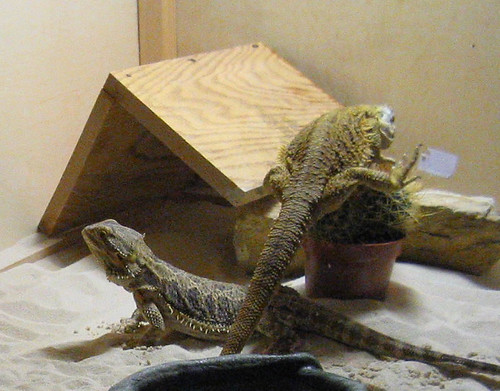




Jeckyl and Hyde is a two-headed, six-legged bearded dragon belonging to Todd Ray, who has the largest collection of multi-domed and multi-limbed animals in the world. Jeckyl eats, but Hyde only drinks.
Todd Ray's Two-headed Animals
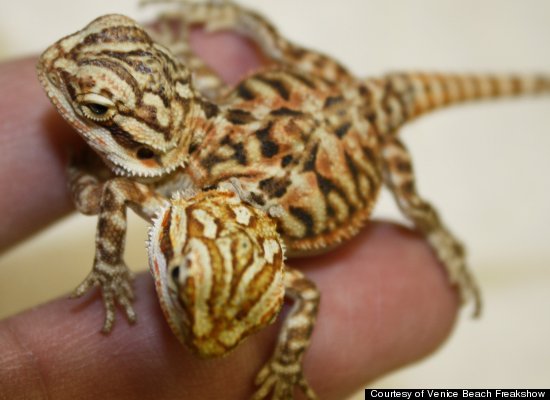
Ray spent around $5,000 for Pancho and Lefty after they were born in May, 2010. He believes they are the rarest animals in the world and is proud he's been able to keep them alive for a year since most people didn't think they'd survive a month.
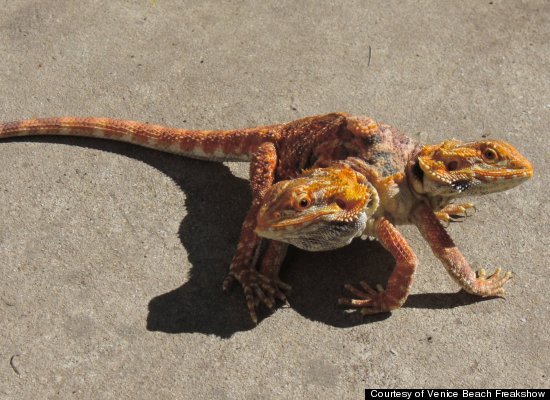

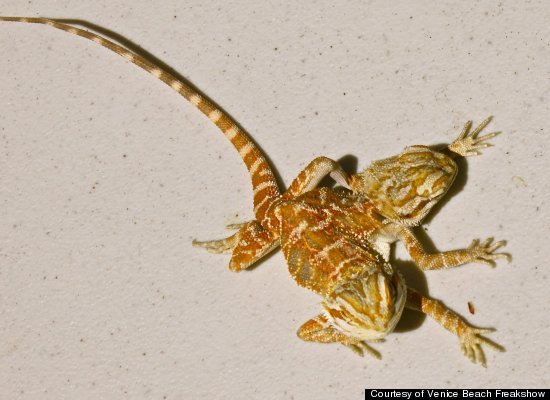
http://www.huffingtonpost.com/2012/04/13/two-headed-bearded-dragon_n_1422693.html#s289461&title=Todd_Rays_Twoheaded

http://www.art.com/gallery/id--b230026/bearded-dragons-posters.htm



http://ar.art.com/shop/artist/39073/Alex-Bramwell.htm
http://www.fotosearch.com/photos-images/bearded-dragon.html









http://www.123rf.com/photo_9254253_vietnam--circa-1983-a-stamp-printed-in-vietnam-shows-the-image-of-a-jackson-s-chameleon-with-the-des.html
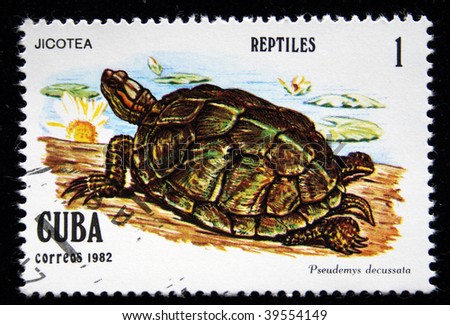
http://www.shutterstock.com/pic-39554149/stock-photo-cuba-circa-a-stamp-printed-in-cuba-shows-cooter-turtles-pseudemys-decussala-series-quot.html
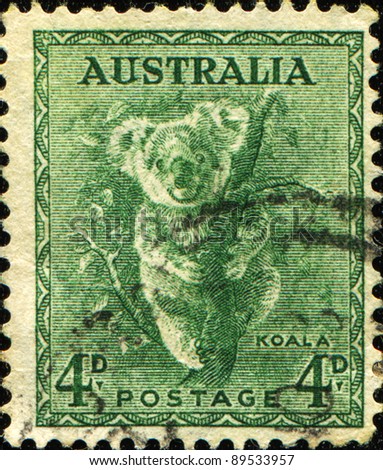
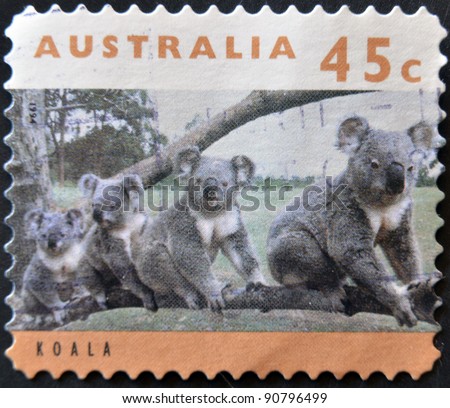


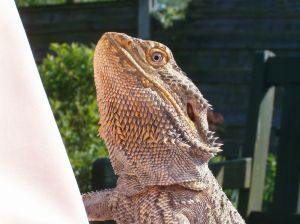






Bearded+Dragons.JPG (JPEG Image, 640 × 399 pixels)
Salad
http://neverblog.net/packaged-salad-mix-for-beardies/
![[JoshuaTreeDusk.jpg]
Dusk over Joshua Tree.](http://www.gdargaud.net/Climbing/California/JoshuaTreeDusk.jpg)
The term bearded dragons can refer to a number of different lizards in the genus Pogona. This genus contains seven species who all originates in Australia. Several different species of bearded dragons are kept as pet, but the by far most commonly kept one is the Inland bearded dragon (Pogona vitticeps), also known as Central bearded dragon. This is the species commonly referred to when saying just Bearded dragon. Bearded dragons are also lovingly referred to as beardies.
The bearded dragons get their name from the spiny pouch located under their jaw. When threatened, they will expand the pouch and it will look a bit like a beard. The males also inflate the pouch the impress females.
Bearded dragons have quickly become very popular pets and are today common place while only 10 years ago they were a somewhat rare sight. The popularity of the animal has led to large quantities now being breed in captivity. A long row of different colour morphs has also been developed and introduced to the market. Bearded dragons are today available in most pet stores but particular colour morphs can be hard to get a hold of and may be quite expensive. There are many likely reasons behind the rapid growth in beardie popularity. These reasons include that bearded dragons are hardy and easy to care for animals that are suitable for children. They are also hypoallergenic which makes them ideal for families containing allergic members. The animals are also very docile, easy to breed in captivity and can become very, very tame if handled enough as young. Some owners compare their bearded dragons to dogs longing for attention.
Most bearded dragons grow to between 15 to 17 inches / 37 – 43 cm but they can grow larger and there are rapports of 23 inch / 57 cm long bearded dragons in captivity.
Bearded dragon taxonomy
Order: Squamata
Family: Agamidae
Genus/species: Pogona vitticeps (usually)
Bearded dragon care
A bearded dragon will require a 70 gallon / 250L terrarium or larger. It should be at least 18W x 18H x 48L (inches) or 45W x 45H x 120L (cm). Young bearded dragons can be kept in smaller 20 gallon / 80 L terrariums but they grow fast and will soon require a larger environment so it is often cheaper to get a large enough terrarium to house the adult right from the start. You should only keep one Bearded dragon per terrarium. They are solitary animals and might injury each other. This is especially true for adult dragons.Beardies should be kept in terrariums that mimic the hot arid regions they originate from. Ideally choose substrate and decorations that mimic their natural habitat as accurately as possible. Avoid using calcium sand as the beardies will ingest it one way or another which can cause health problems if they consume too much. Aquarium and pea sand is other non-suitable substrates as they can cause problem if ingested. You should also avoid substrates that can retain moist. Young dragons are usually best kept in a less realistic setup with paper towels as substrate to allow for easy cleaning. It also reduces the risk of an unskilled hunter swallowing large amounts of sand when trying to catch and devour prey.
The terrarium should ideally contain a number of decorations that stimulate the bearded dragons by allowing them to climb on them and hide under them. Examples of such decorations include driftwood, cork bark and rock piles. If you use rock piles you should make sure that they are stable and that the lizard can’t shift rocks to create a potential harmful rock slide that can hurt the beardie and damage the terrarium. None toxic silica can be used to secure the rocks to one and another.
Bearded dragons are so called “cold blooded” animals from a hot sunny environment. The terrarium should mimic this and allow the dragons to thermoregulate by moving around in the terrarium. This means that there should be hot spots under heat lights as well as colder areas that the lizard can move between to regulate its body heat. A good way to achieve this is to create a shaded area on one side of the terrarium and put a heating lamp on the other. The basking spot under the heat lamp should reach 35-40° C / 95 - 105° F. The basking lamp should produce both heat and UVB light which the dragon needs to produce vitamin D3. Dragons need this vitamin to be able to absorb calcium and use it to form strong bones. The rest of the terrarium should ideally be 25 - 28 ° C / 78° - 82° F.
Bearded dragon feeding
Bearded dragons are omnivores and eat both meat and vegetables. It is therefore best to give them a varied diet including both fruits and vegetables and insects. Younger bearded dragons require a larger part insects in their diet than adult animals that can be fed mainly vegetables. Adult animals can be fed 80% vegetables or more; juvenile bearded dragons can be given a diet that consists of equal parts insects and vegetables. There are a long row of different feeder insects available on the market but one of them, meal worms, should generally be avoided as they contain little nutrition for their size. Other feeder insects have much better nutritional value and are better options for your dragon. Wax worms and super worms should only be given as treats as they contain too much fat to be used as a regular food item. They can be good to fatten up undernourished dragons. Choose feeder insects that are smaller than the distance between the eyes of your bearded dragon. Dust the insects with vitamin/mineral supplement before serving them. Juvenile dragons should also be given calcium supplements.It is recommendable that the vegetable part of the diet contains finely chopped fruits to ensure that they get all the nutrients they need. They should be fed vegetables every day.
Bearded dragon breeding
Bearded dragons are easy to bred and well cared for animals often start breeding at 2 years of age. Sexing bearded dragons are easy once they reach 3 months of age. In males hemipenal bulges can be seen of each side of the tail just below the cloaca (towards the tail end). The bulges are separated by an intention in the centre of the tail. Only males have these bulges.If you want to breed bearded dragons you will need a healthy sexually mature pair, a large enough terrarium to allow for the mating behaviour, and a suitable place for the female to lay the eggs. Simulate winter to get your dragons in breeding condition by lowering the temperature for 2-3 months before returning it to normal and starting to feed the animals more heavily than normal. It can also be good to give the lizards extra vitamin and mineral supplements during this time.
The males will start displaying breeding behaviour by bobbing their heads and stamp their feet and starting to chase females down and bite them in the neck to immobilize them to allow for mating. Once a successfully mating has taken place the male can be removed from the terrarium.
The female lay her eggs 4-5 weeks after mating and will need a suitable place to deposit her eggs. This place should be moist but not wet. Suitable places can be created by adding piles of damp soil or sand. The pile should be large enough to allow the female to dig a pit for the eggs. Once the eggs are laid it is best to move them to an incubation container or alternatively remove the female from the terrarium and hatch the eggs where they were laid. The former is an easier and better solution. An incubation container should be filled with moist sand and peat moss mixed in equal proportions. The mixture should be moist but not wet. Water should not drip from it if you put it in your hand and squeeze lightly. Create small pits in the substrate in the container. Place on egg in each pit making sure not to rotate the egg as this can kill the embryo inside. Once the eggs are put in the container substrate should be carefully pushed against the eggs to help keep them moist. Incubation takes about 60 days in 29,5°C / 85°F
Bearded dragon Facts
Bearded dragon fact #1 You should avoid holding your bearded dragon around the chest and stomach. If you have to, use a soft grip not to interfere with or preventing the dragon’s breathing.Bearded dragon fact #2 Male bearded dragons have a set of pre-anal pores between the back legs and have hemipenal bulges at the vent area. Females do not have these pores.
Bearded dragon fact #3 A lot of different colour morphs have been developed during the 21st century. These include “Blood Red”, “High Orange”, “Peach”, Tiger-striped”, “Hypomelanistic”, “Lemon Yellow”, “White”, “Sandfire” , “Fire”, “Ice” and “Red-gold” to mention just a few. Different color morphs attain different prices in the pet trade.
Bearded dragon fact #4 You should not feed your beardies insects from the wild as this might introduce disease to your terrarium. Another possible problem is that the insects might contain pesticides that are harmful for the lizards.
Bearded dragon fact #5 A number of common fruits and vegetables can be toxic for your bearded dragon. These include avocado and different vegetables that are rich in oxalates such as rhubarb, spinach, kale and cabbage.
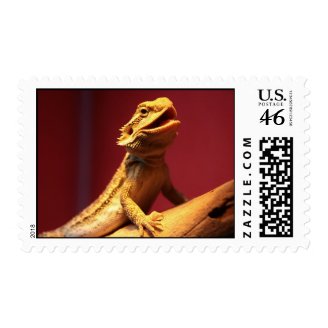

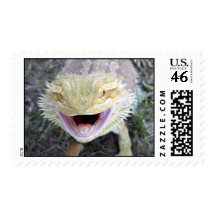
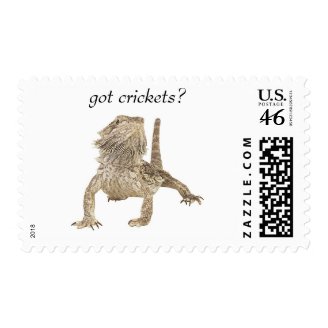

No comments:
Post a Comment